As the arctic blast descends on the US next week, we here in central Alabama are expecting a low temp on Monday night of 14 degrees. That’s the coldest temp we’ve seen since we started growing, and it’s causing us to do quite a bit of head-scratching as we prepare.
Our task will be more complicated because of the weather between now and then. We will have a (comparatively) warm sunny day today (Saturday), a 70% chance of rain Sunday evening with high winds, and brutally high winds all day Monday. That makes us uncertain about when to deploy things like frost blanket. Too soon and we risk cooking the tender plants; too late and we’re trying to work with frost blanket in virtually impossible conditions caused by dropping temps and high winds.
On the positive side, this event is typical of hard freezes in the south, we expect the period of coldest temps down in the teens to last just a few hours, followed by a nice bounce-back and lots of sunshine. The low Tuesday night is forecast to be 21 degrees, cold for sure, but less brutal than Monday night.
The first thing we will do is harvest. Amanda has turnips, collards, a rutabaga or two, and a little broccoli that’s ready to bring in now. She’ll harvest it later today.
We want to make sure everything is well hydrated going into Monday night; well-hydrated plants are better able to withstand freezing temperatures. If we don’t get a good drenching rain Sunday night, we’ll irrigate everything thoroughly on Monday.
Plant by plant:
Asparagus. As it happens I have not yet winterized the asparagus. I will do that today. I will bring down all the stalks and cover the entire bed with about 5-6 inches of wood mulch.
Bed 5 – lettuce. We’ll cover the lettuce on Monday. Amanda’s still researching whether the artichokes in Bed 5 can take these temps.
Bed 7 – garlic. Garlic can withstand temperatures much colder than we’re expecting. God bless’em, we’ll just photograph them and watch them muscle through.
Bed 10 – strawberries. This is a second-year bed that has thoroughly covered the soil going into its second year and is not yet showing any sign of blooming. We will not cover it.
Bed 11 – kale, broccoli, collards, and rutabaga. This is our prettiest and most productive fall veg bed, having been protected by insect barrier since we planted it, and the Farmer-in-Chief wants to protect it at all costs. She’ll deploy frost blanket on it during the day Monday.
Bed 12 – brussels sprouts and cabbage. She’ll cover the brussels sprouts. She will not set out to cover the cabbage, but it’s next to the brussels sprouts and may get covered anyway.
All other beds. We will not cover anything else. What we will do is to take a good high-res photo of each bed immediately before and immediately after the freeze event to catalog exactly what survived and what didn’t. Included in this “research” group are broccoli, turnips, perennial leeks, collards, carrots, and some cabbage. It also includes several beds that are planted in sweet lupin cover crop.
Over in the orchard, I’m generally not trying to protect any of the fruit trees except a couple of very young figs that will just get a load of hay. I am planning to wrap our two olive trees (both about belly-button high) with frost blanket. I’ll measure and cut the frost blanket today and wait to apply it until Monday. I don’t have heavy mulch around the olive trees; if I did, I would pull it back to allow the ground’s heat to help protect the trees.
We have four golden kiwi trees that I had already wrapped earlier in the winter. I wish I could do more to protect them but I can’t. We’re hoping for the best.
The frost blanket we’re using is a roll of Agribon AG-30. It’s lightweight, sheds water well, and provides 4-6 degrees of frost protection.
I must admit that our response to this is fluid. Things are going to be happening quickly between now and Monday night, but I’ll try to keep this post updated as our plans change.
Jan 6 update:
We got only 5/100 of an inch of rain, so during the day today I made sure everybody got a good soaking. It was a grueling day working in the cold and the wind, but I think we’ve done a decent job preparing for the low temperatures. The photos below catalog our work.
Jan 7 update:
Outside temp at 3:45 am is 13 degrees and calm. Wish that wind would kick back up to keep the air stirred up a little. We ended up with a low temp of 10 degrees and calm. The big challenge of the morning is that we lost water to the lodge, to the utility sinks in the shop and storage room, and to the toilet in the barn. The toilet freed up about 10:45 this morning, and the lodge water freed up about noon. We’re leaving the frost blanket on everything through tonight, when it’s due to get down below 20 again.
Jan 13 update:
We pulled the frost blanket on January 9, and with the benefit of a few days of recovery time, we came through surprisingly well. The lettuce in #1 was a clear casualty; it was sort of hanging on before the freeze and was destroyed. We suffered some damage to the lupin cover crop, and our two tiny and unprotected loquat trees took some damage. Perhaps more significantly, a side-by-side comparison of the beds before and after shows what I would call a loss of general vitality. In bed after bed, the brassicas are still alive but more brown and less green. I took these photos using exactly the same settings, so when a bed appears less green after than it was before, you can conclude that’s an effect of the freeze.
The good news is the protection we received from the AG-30 frost blanket. The two beds that were covered, beds 9 and 11, show little or no damage.
One or more of the young figs probably got clobbered. They’ve proven susceptible to less severe freeze events than this one. But we won’t know where we stand with them until it’s time for new growth in the spring.
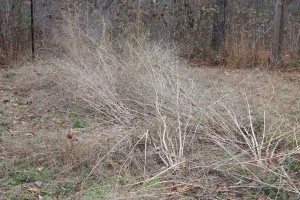
The asparagus bed was overdue for winterizing. Those ungainly stalks are the remnants of the ferns from this summer.

I would have been shocked if there had been any change to the asparagus bed from the freeze. There wasn’t.
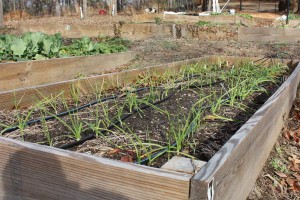
Bed 7 after. As we expected, the garlic was unfazed. It probably would have been fine down to 10 below or so.

Bed 8 lupin close-up after. You can see some real damage. especially when you click and see the high-res version.
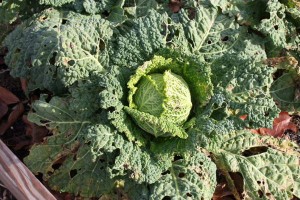
Bed 9 cabbage close-up after. We’ll never know whether it needed the frost blanket, but with it, it sailed through undamaged.
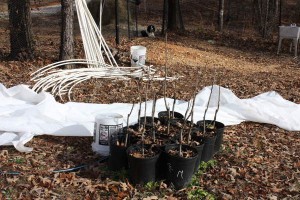
Pecans after. Other than showing that I’m a sloppy housekeeper on Veg Hill and that Oddie knows how far into the garden he’s permitted to go, there’s not much to see.

The unprotected lettuce in Bed 1 just got clobbered, but it wasn’t a great loss. We’re surprised it made it so long.
I hadn’t paid much attention to the loquat trees but should have, because they’re evergreen. I think both will make it, but they’ve taken some damage, particularly the second one.
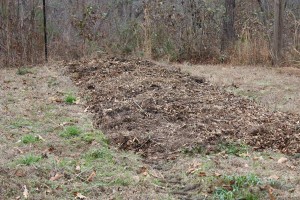
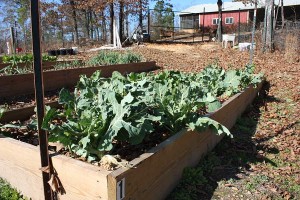
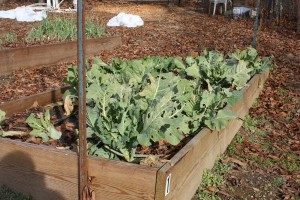
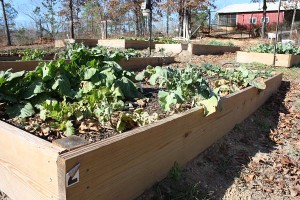
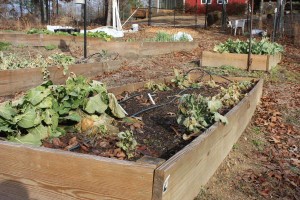
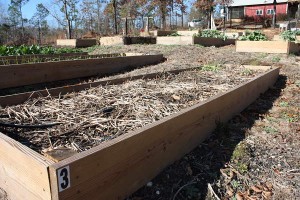
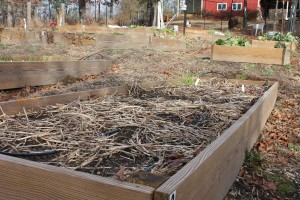
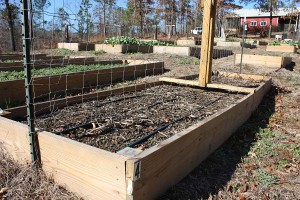
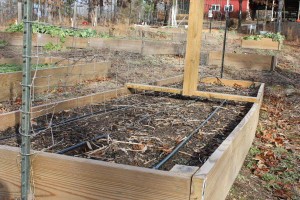
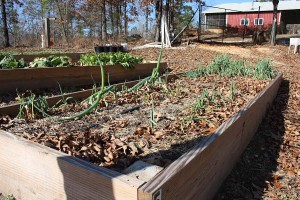
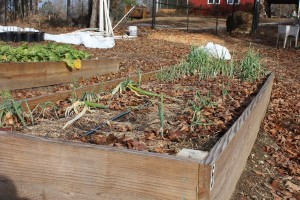
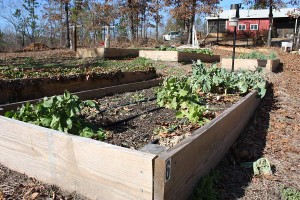
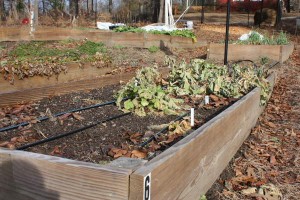
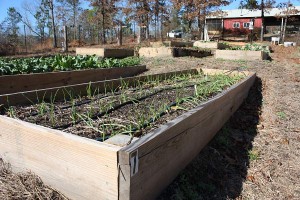
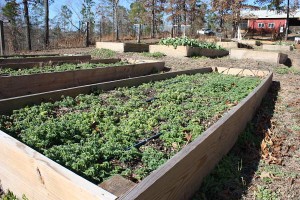
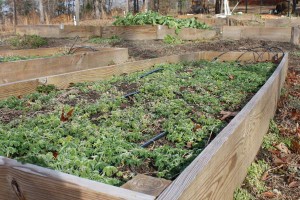
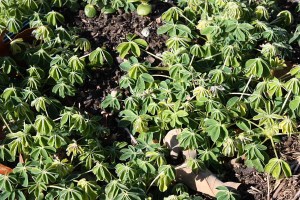
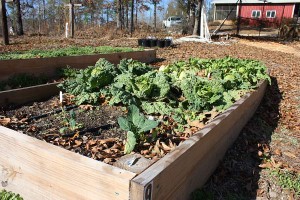
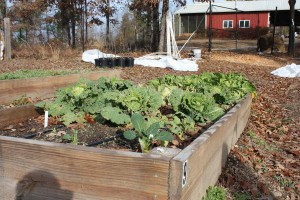

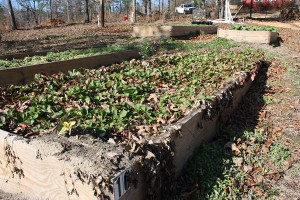
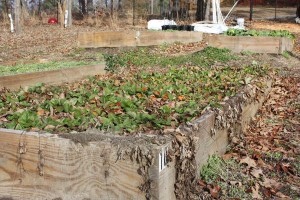
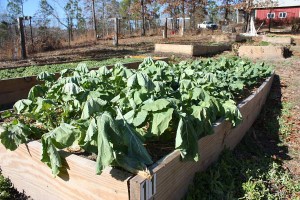
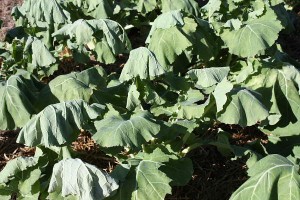
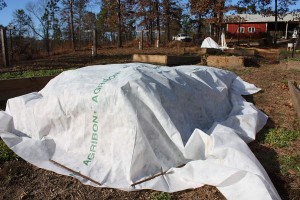
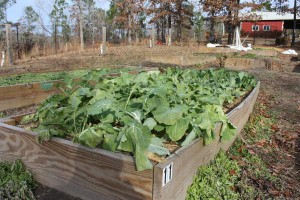
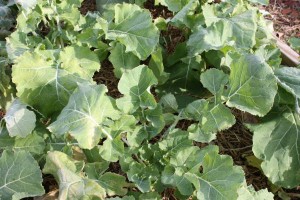
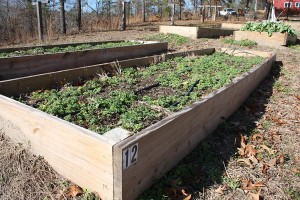
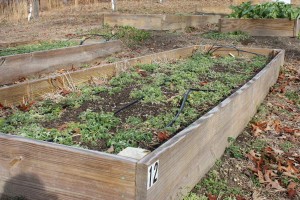

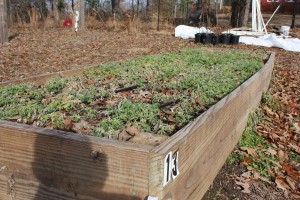
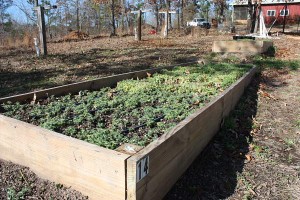


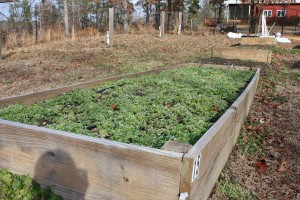
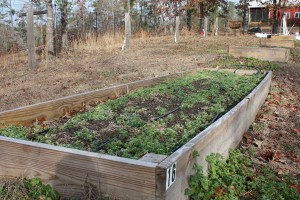

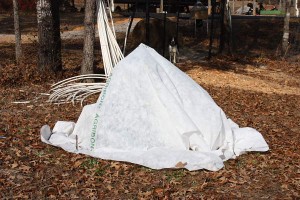
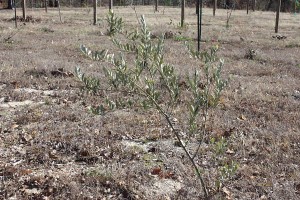
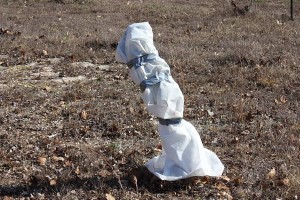
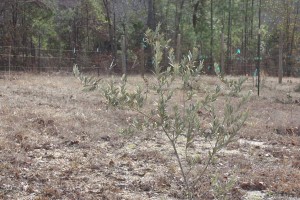
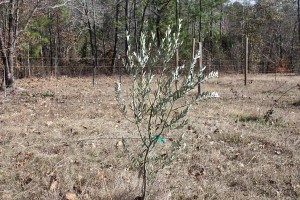
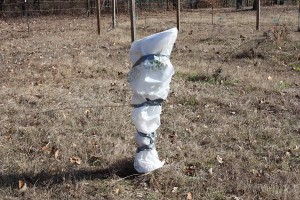
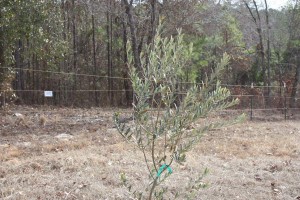
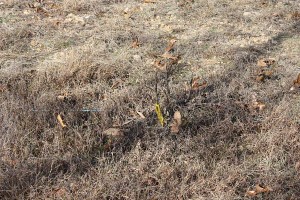
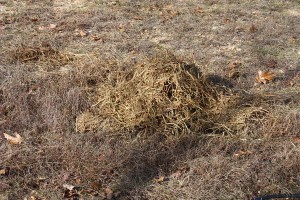

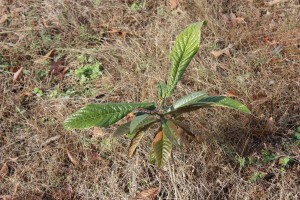
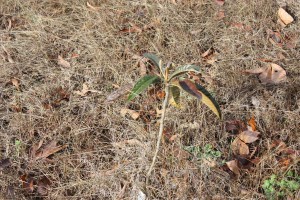
Pingback: Podcast #220 – 10 Above Is Cold in Alabama « Longleaf Breeze